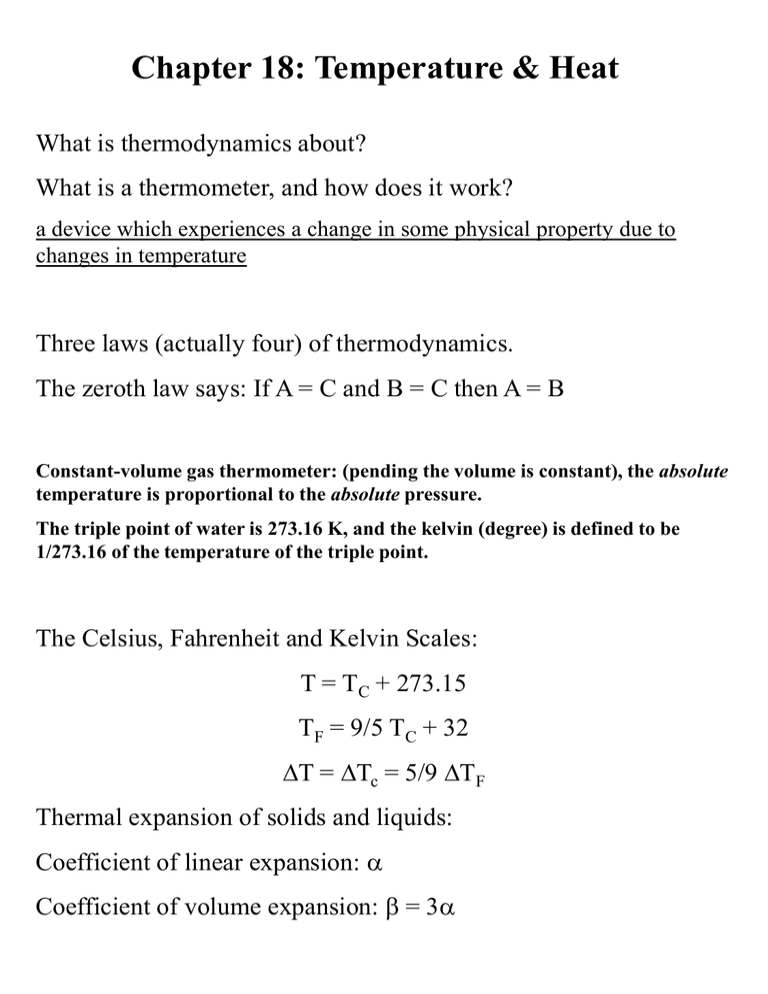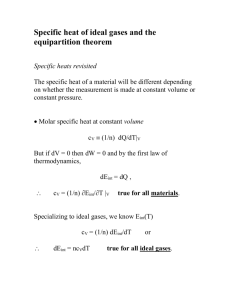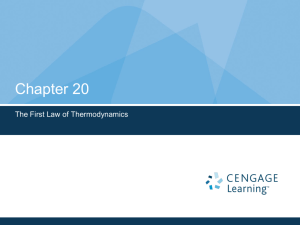Chapter 18: Temperature & Heat
advertisement

Chapter 18: Temperature & Heat What is thermodynamics about? What is a thermometer, and how does it work? a device which experiences a change in some physical property due to changes in temperature Three laws (actually four) of thermodynamics. The zeroth law says: If A = C and B = C then A = B Constant-volume gas thermometer: (pending the volume is constant), the absolute temperature is proportional to the absolute pressure. The triple point of water is 273.16 K, and the kelvin (degree) is defined to be 1/273.16 of the temperature of the triple point. The Celsius, Fahrenheit and Kelvin Scales: T = TC + 273.15 TF = 9/5 TC + 32 DT = DTc = 5/9 DTF Thermal expansion of solids and liquids: Coefficient of linear expansion: a Coefficient of volume expansion: b = 3a DL = a Lo DT DV = 3a V DT DA = 2a A DT Can a be negative? Calcite/ water How does a thermostat work? the bimetallic strip a is greater in gases than in liquids; greater in liquids than in solids What is: Internal energy, Thermal energy and Thermal energy transfer (heat)? What does: Q = 0 mean? What does: Q < 0 mean? What are the common units of heat? Q = C DT = m c DT What are the units of c or C? Q=mL What are the units of L? Work: W = dW = p dV The ‘amount’ of work is the area under the p-V diagram curve. What does: W = 0 mean? What does: W < 0 mean? FLTD: DEint = Eint,f - Eint,i = Q - W Adiabatic process: Q = 0, DEint = -W Adiabatic Free Expansion in ideal gas: no work, DEin = 0; so, T does not change. Constant volume (Isovolumetric) process: W = 0, DEint = Q Cyclical process: • No change in system properties including internal energy! • DEint = 0 • Q =W Conduction: Pcond = Q/t = (-) k A DT/L k: thermal conductivity. Large k means good conductors







